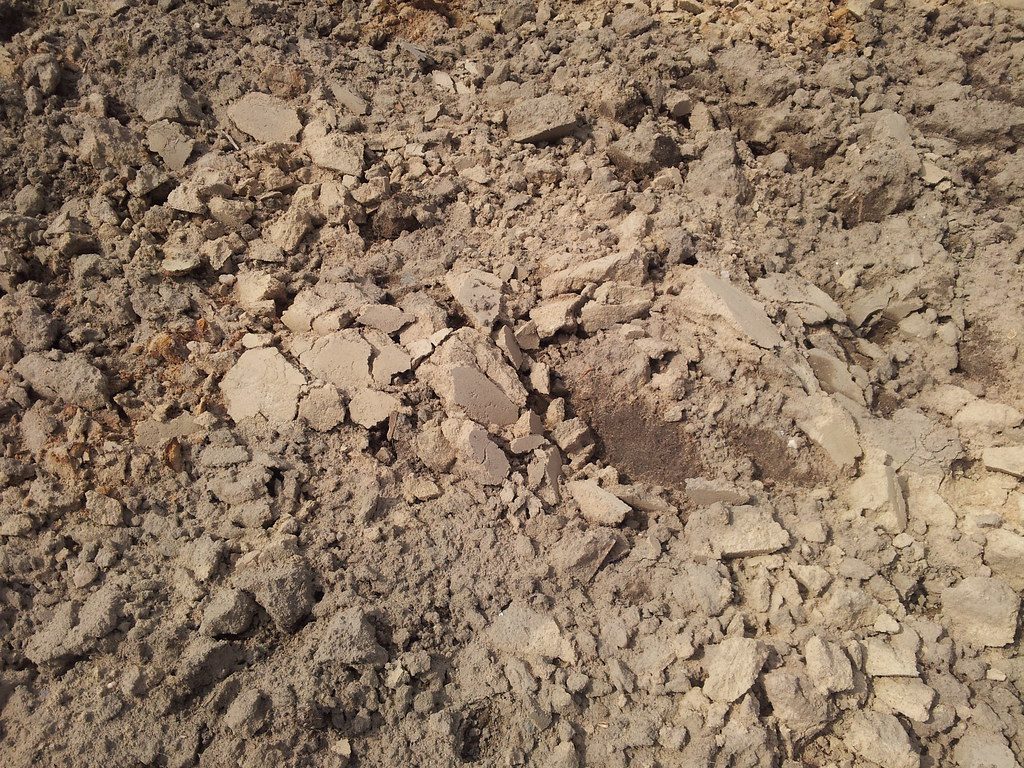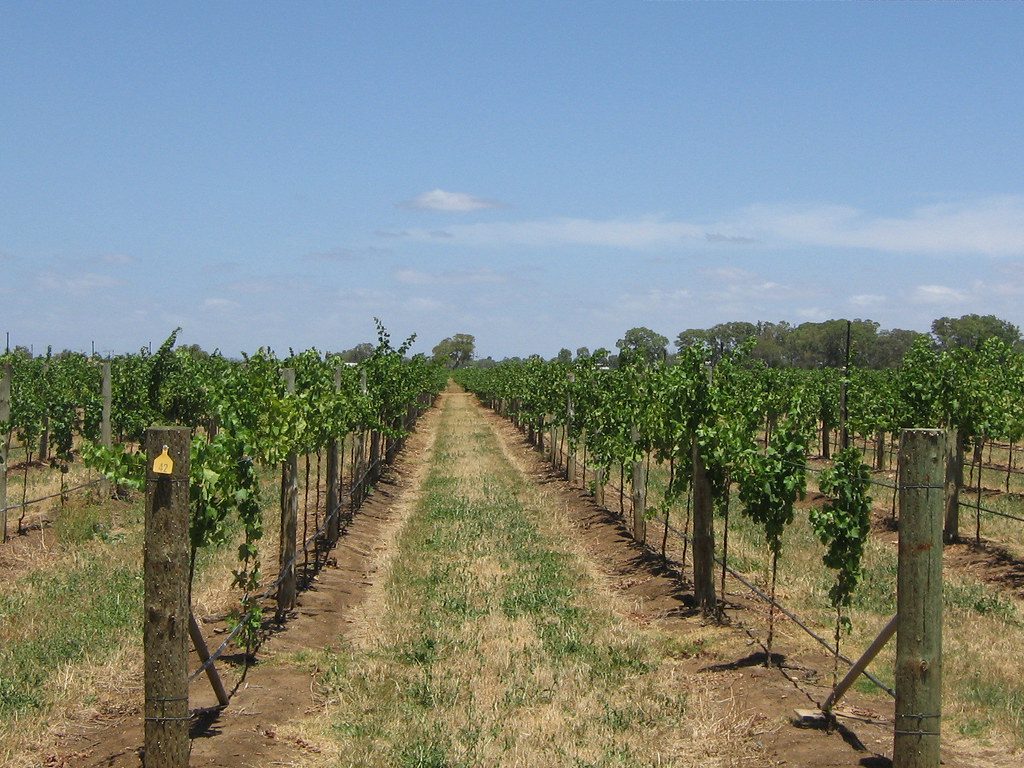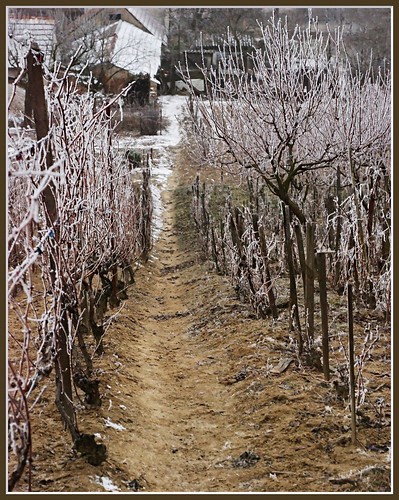Soil quality is one of many important pieces of the puzzle when it comes to grapevine health and wine quality, in addition to the ecosystem as a whole. While there are many factors that influence soil quality, one which will be the focus of today’s blog post — the fungal community. Specifically, filamentous fungi play a crucial role in soil health, improving soil structure and performing decomposition of organic materials to improve nutrient richness.

“Soil after Tractor” by nikolayhg1 is licensed under CC BY 2.0
The species of fungi present in the soil depends on several factors, including the organic material present in the soil (nutrients, roots of plants, etc), environmental conditions (humidity, etc), season (spring, etc), and soil management practices (tillage, pesticides, etc).
Soil tilling is just one management practice that is common in agriculture, though any benefit of the practice is countered with increased soil erosion and loss of organic material, which could have a negative impact on fungal and other microorganism populations living in the soil. In lieu of soil tillage, more and more agriculture and vineyard managers are adopting lower-impact strategies, such as cover crops and low/no tillage between rows, improving soil structure, microorganism diversity, and overall soil quality.
A new-ish study, published in March 2019 in the journal Applied Soil Ecology, aimed to examine the effects of season and tillage on fungal communities in vineyard soils, specifically looking at tillage versus non-tillage over the course of an entire year/4 seasons and how this influenced fungal structure and diversity.
Brief Methods
NOTE: I’m leaving out some details to keep this post from going on and on and on and on ……but if you have specific methodology questions just ask in the comments and I’ll see if I can find the answer in the original paper for you.
This study took place from February 2012 through November 2013 in two 1 ha vineyards at the La Rioja government-owned Farm La Grajera in Logroño, Spain. One vineyard was used as the tillage treatment vineyard, while the other was used as the non-tillage treatment vineyard.
In the tillage treatment, between rows were tilled in March, May, June, and November, and within the rows were treated with herbicides in November and April.
In the non-tillage treatment, vegetation was allowed to grow freely between rows, though it was mowed in February and May. Within the rows were treated with the same herbicide schedule as the tillage treatment vineyard.
Soil samples were collected in the middle of between the rows, as well as within the row for both treatment vineyards at depths of 5-20cm.
Samples were collected during all four seasons: winter (sap secretion – end of February), spring (flowering – end of May), summer (veraison – end of August), and autumn (after harvest – end of November).
A total of 162 soil samples were collected and analyzed over the course of the 2-year study period across 2 treatment vineyards.

“vineyard” by björn hornemann is licensed under CC BY 2.0
Fungal species abundance and diversity were calculated after isolating and identifying all fungal species in the samples.
Selected Results
- 193 taxa of fungi were identified; 21 genera.
- 14.5% of the taxa were in abundance of over 1% of the total taxa identified.
- Fungal species that were in greatest abundance across all samples were from the genera Aspergillus, Fusarium, and Chaetomium.
- 10% of the taxa were found in only one treatment, one weather type, and one season.
- Fungal species making up the majority of this group were from the genera Penicillium and Trichoderma.
- Most taxa identified were classified as generalist (“eat a lot of different stuff”) species (60% of the total).
- 80% of the species found between rows in the spring season were generalists.
- Fungal species diversity overall was relatively low.
- The season had the greatest influence on fungal community composition (more than weather or tillage treatment type).
- For example, in winter there tended to be species more adapted to colder weather, while in the summer there tended to be more generalist species.
- Significant differences in fungal composition were found between the two soil management treatment types (tillage vs non-tillage).
- 29% of the taxa found were specifically related to soil management treatment.
- Species abundance and richness were lowest in the tillage treatment in the autumn.
- Herbicide treatment seemed to have an effect on fungal composition as well – species better adapted to the new environment after chemical herbicide application were present.
- Non-tillage treatment soils contained greater numbers of common fungal taxa than tillage treatment soils.
Conclusions
Overall, the results of this study provide insight into the fungal composition of a vineyard undergoing tillage versus non-tillage management practices. In general, fungal composition was different between tilled and non-tilled soils, with tilled soils harboring more fast-growing species compared with to the non-tilled soils. This could suggest differences in soil quality, since each species plays a different ecological role than the next, though exactly how the quality is changed in not the focus on this study.
Interestingly (or not), the season had a greater influence on fungal communities than the tillage treatment. While digging up and stirring around the soil certainly influenced the fungal community, the nature cycle of the seasons influenced the fungal community to an even greater extent. Of course, putting the two factors together, which is obviously unavoidable (you can’t exactly stop the seasons from changing), fungal community structure was changed more in the tillage treatment compared with the non-tillage treatment overall.
What this study shows is very basic – fungal communities change with the seasons, and they change if you till the soil rather than let it leave it as cover crops. This might suggest a change in soil quality, which would have an impact on grape and thus wine quality. How that changes is not a focus of this study, and is thus speculation based on this study alone.
It would have been interesting to see a third and fourth treatment compared in this study – tillage and non-tillage with no herbicide treatment. The chemical herbicide treatment had an effect on the fungal community overall, so it would have been interesting to see what the community would look like if that chemical input wasn’t present.
Overall, a simply study, but one that provides a peek into the world of soil fungal composition and how one specific soil management practice (tillage) might change this community.
Source:
Hernandez, M.M. and C.M. Hernandez. 2019. Influence of seasonality and management practices on diversity and composition of fungal communities in vineyard soils. Applied Soil Ecology 135: 113-119.

